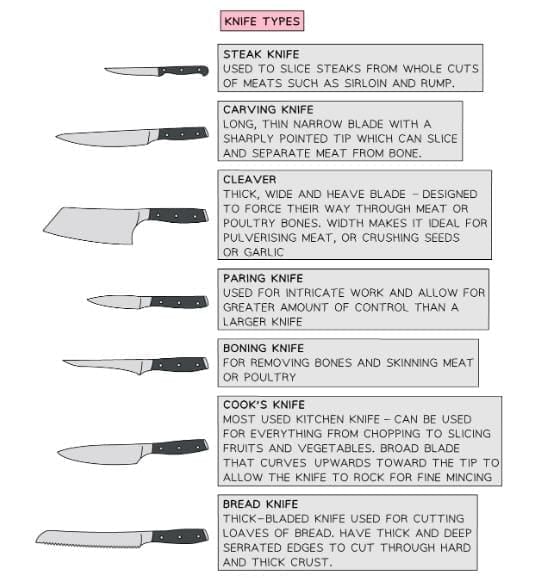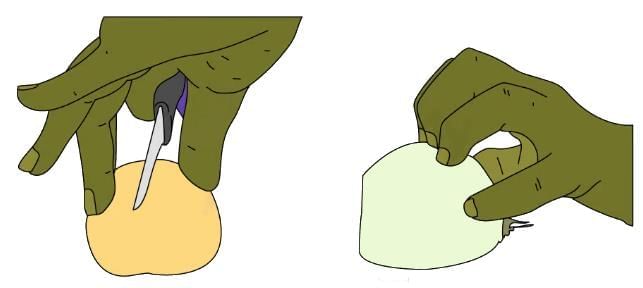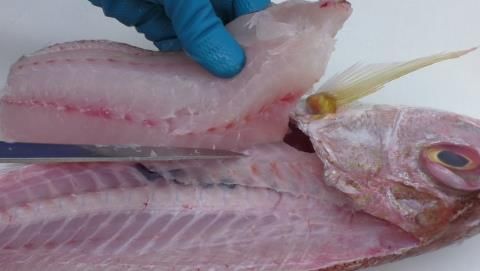Year 6 Exam > Year 6 Notes > Food & Nutrition for Year 6 > Knife Skills
Knife Skills | Food & Nutrition for Year 6 PDF Download
Knife Skills
Knives are a vital tool for any chef, requiring careful handling and maintenance to ensure safety and efficiency.
Key Considerations for Knife Use
When using knives, it’s essential to:
- Clean knives thoroughly after each use to avoid cross-contamination with pathogens.
- Maintain sharpness by regularly using a knife sharpener.
- Select the appropriate knife size for the specific food being prepared.
- Store knives securely in a knife block, on a magnetic strip, or in a protective wrap.
- Carry knives with the blade pointing downward to prevent accidents.

Techniques for Cutting Food
Different foods demand specific cutting techniques tailored to their texture and preparation needs.
Fruit and Vegetables
Fruit and vegetables can be prepared by:
- Peeling: Removing the outer skin.
- Slicing: Cutting into thin, flat pieces.
- Dicing: Chopping into small, uniform cubes.
- Cutting into even-sized pieces: Shaping into batons or fine strips (julienne).
For safe and precise cutting, secure the food using:
- Bridge hold: The thumb and forefinger form a bridge over the food to hold it steady, allowing the knife to cut beneath.
- Claw grip: Fingertips are tucked inward, resembling a claw, to firmly hold the ingredient in place.

Meat, Fish, or Alternatives
Various knife skills are applied depending on the type of meat, fish, or alternative protein:
- Filleting chicken: Separating the breast meat from the bone.
- Portioning chicken: Dividing a whole chicken into parts like wings, legs, and breast.
- Trimming fat, rind, or skin: Using a small knife to remove excess fat or skin.
- Filleting fish: Cutting fillets from both sides of a fish.

- Slicing: Cutting meat, fish, or alternatives like tofu or halloumi into uniform cubes or slices.
The document Knife Skills | Food & Nutrition for Year 6 is a part of the Year 6 Course Food & Nutrition for Year 6.
All you need of Year 6 at this link: Year 6
FAQs on Knife Skills - Food & Nutrition for Year 6
| 1. What are the basic knife skills that every beginner should learn? |  |
Ans. Every beginner should start with essential knife skills such as the proper grip, how to hold the knife safely, and basic cutting techniques like slicing, dicing, and chopping. Learning the correct way to use a chef’s knife, paring knife, and serrated knife is also crucial for effective food preparation.
| 2. How can I practice my knife skills at home? |  |
Ans. You can practice your knife skills at home by regularly preparing simple meals that require chopping, slicing, and dicing. Start with soft vegetables like cucumbers and tomatoes, then gradually move on to harder ones like carrots and potatoes. Using a cutting board and practicing different cuts will help improve your technique over time.
| 3. What safety tips should I keep in mind while using a knife in the kitchen? |  |
Ans. Safety tips include always cutting away from your body, keeping your fingers curled under while holding food, ensuring your knife is sharp (as dull knives can slip), and not getting distracted while cutting. It's also important to use a stable cutting board and to clean up any spills immediately to prevent accidents.
| 4. What types of knives are best for different food preparation tasks? |  |
Ans. For general food preparation, a chef’s knife is versatile and ideal for chopping. A paring knife is great for peeling and intricate tasks, while a serrated knife works best for slicing bread and tomatoes. A boning knife is useful for cutting meat, and a cleaver is excellent for chopping through bones.
| 5. Why is it important to maintain and sharpen knives regularly? |  |
Ans. Regular maintenance and sharpening of knives are important because a sharp knife is safer to use than a dull one, as it requires less force and is less likely to slip. Keeping knives in good condition also extends their lifespan and ensures precision in cutting, which can enhance the overall cooking experience.
Related Searches




















